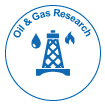开放获取期刊获得更多读者和引用
700 种期刊 和 15,000,000 名读者 每份期刊 获得 25,000 多名读者
抽象的
An Overview on Microwave Heating Application for HydrocarboncontaminatedSoil and Groundwater Remediation
Pietro PF, Annalisa B, Federico GA and Vagliasindi
In the last decades, the world’s dependence on oil and the growing demand for its final products have been caused a massive amounts of soils and water contaminated with hydrocarbon compounds, including fuel and petrochemical products. This resulted in the search of cost-effective techniques for remediation applications. Several chemicalphysical or biologic treatments have been proposed to decontaminate hydrocarbon-polluted articles, however these alternatives may be ineffective, expensive or too lengthy. Recently, microwave (MW) heating has been identified as a potential tool for hydrocarbon-polluted soil and groundwater remediation due to several advantages including simplicity, safety, flexibility, short treatment times and low risk. The present work reports MW heating theoretical background and the related techno-economic features.

 English
English  Spanish
Spanish  Russian
Russian  German
German  French
French  Japanese
Japanese  Portuguese
Portuguese  Hindi
Hindi